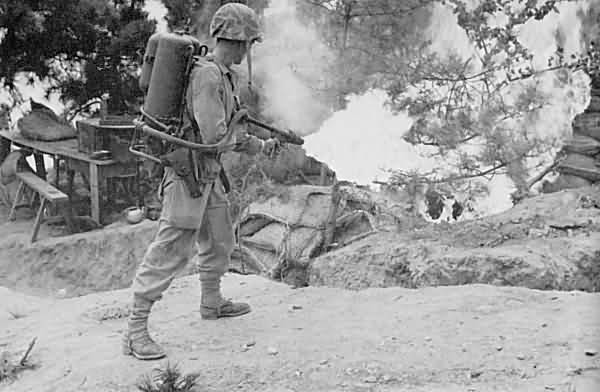This 351' peak dominated the other major assault beaches, Red Beach to the North and Blue Beach to the South, which was why the capture of Wolmi-Do was the key to the entire Inchon invasion.
This sandbagged gun pit was dug into rear of a slit trench. Table, bench and other items show how completely the sudden bombardment and assault came, for the defenders.
3/5's assault companies G and H, landed by LCVPs from the APDs (Attack Transports), quickly overwhelmed most of the North Korean defenders. But not all. Once the remnants partly recovered, they showered grenades down on I Company, 3/5's reserves, who came in the 3rd Wave and were mopping up in support.
Unfortunately for the NK, Comstock (LSD 19) and Fort Marion (LSD 22) had also landed 6-M26 tanks and this flame thrower team, and they killed all NK who would not clearly surrender.
On this day Wolmi-do, with its 200-yard "beach" of sand and rocks, its low-revetment and supporting ridge, its dominating peak and stubborn defenders fell. Seoul was 25 miles further inland. Ten bloody days of fighting remained before MacArthur would claim the capitol as again free. Seoul changed hands two times again during the next several months.
But thanks to men like this Marine, Seoul is still free today.


